Clare Victoria Balding OBE was born on 29 January 1971 to the internationally respected horse trainer Ian Balding and his wife Emma Hastings-Bass. Clare’s maternal family comes from a well-documented aristocratic lineage, being descended from the Earls of Derby, and horse training is heavily represented in her genes from both sides of her family.
Searching the records on TheGenealogist we can find Clare in the birth index for 1971 in the Westminster district. Her double entry has been caused by her mother’s maiden name reflecting a change in family surname when she was a child. In 1954 Clare’s maternal grandfather, Peter Hastings, inherited the estate of his uncle, Sir William Bass and altered his and his children’s surname to Hastings-Bass as required by his uncle’s will. Emma’s elder brother, William Hastings-Bass, inherited the title of 17th Earl of Huntingdon as the great-grandson of the 14th Earl, the 16th Earl dying without issue.
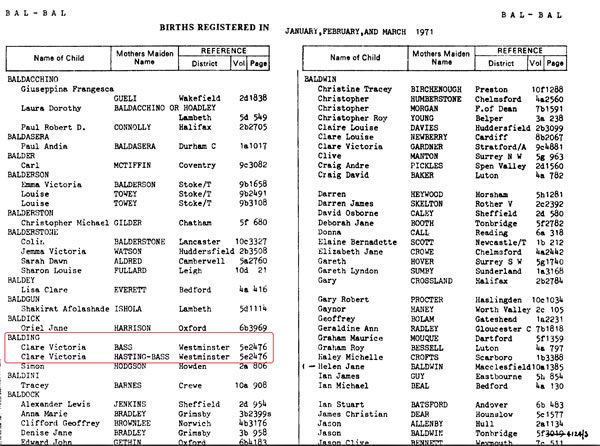
Clare’s maternal grandmother, Priscilla Victoria Hastings, was the daughter of Sir Harold Malcolm Bullock and Lady Victoria Stanley, the daughter of the 17th Earl of Derby. Sir Malcolm, who prefered to use his middle name rather than his first, was a Member of Parliament for Waterloo in Lancashire 1923–1950 and then M.P. for Crosby 1950–1953. In the First World War, Sir Malcolm served as a Captain in the Scots Guards and we can find his entry in The Army List of 1914 and in the official Wounded lists in TheGenealogist’s military collection.
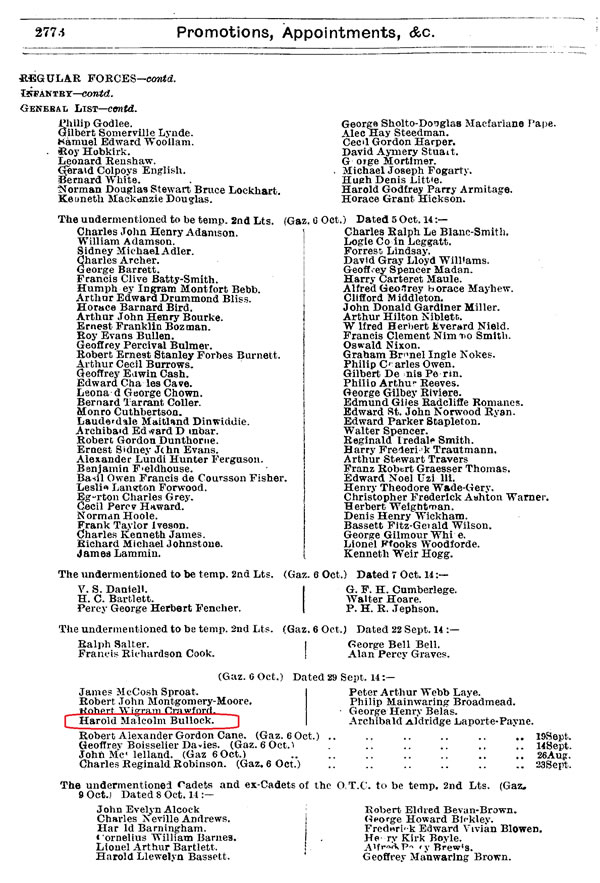
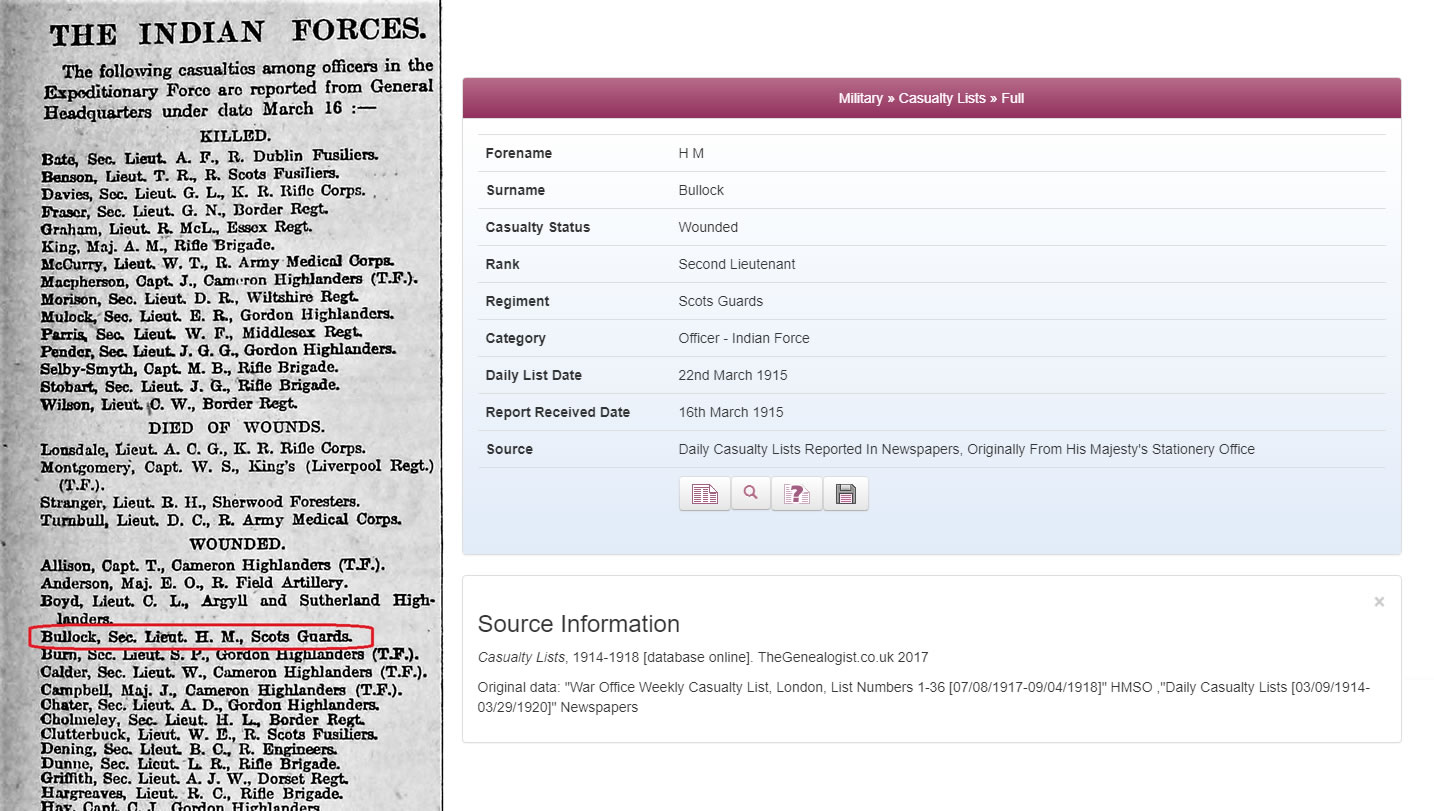
Records in the Peerage, Gentry & Royalty collections on TheGenealogist allow us to trace the aristocratic line of Clare’s family back for centuries in resources such as the Burke’s Peerage and Baronetage, as well as various entries in several of the Visitation of England and Wales books.
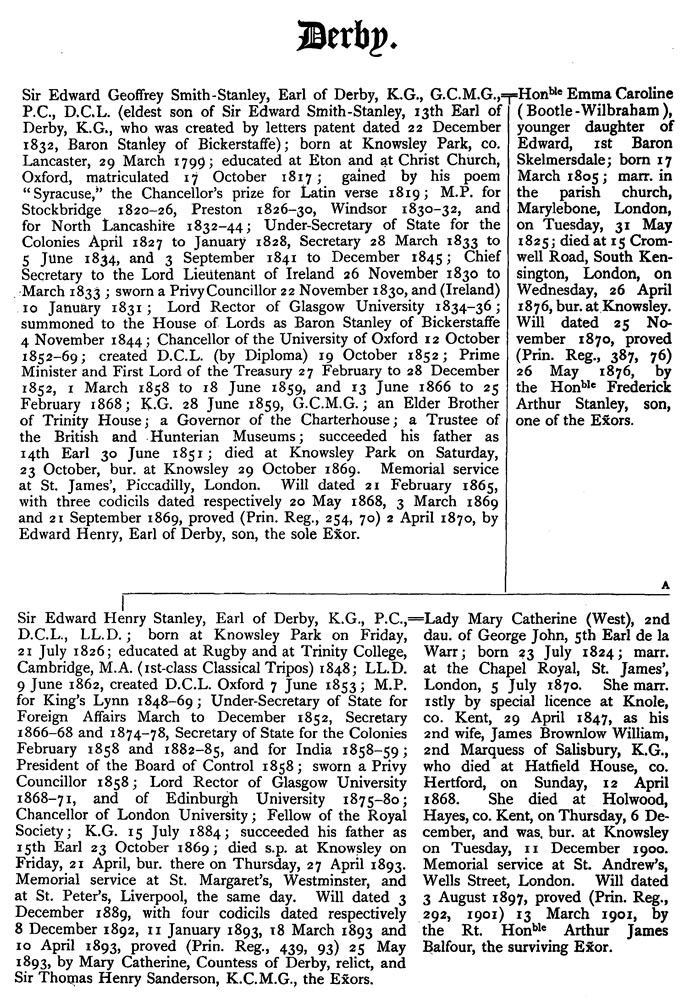
In Clare’s Who Do You Think You Are? episode, however, it is not her connection to the aristocracy that she is most interested in. On screen she reveals that there had always been a bit of mystery about her great-grandfather, Sir Malcolm Bullock. Clare, who is married to Alice Arnold, is seen in the TV programme to be curious about her maternal great-grandfather’s sexuality. Family stories suggested there’s “something of a whiff of scandal” about Malcolm’s life after Lady Victoria’s death with Clare’s grandmother reputedly burning a lot of her father’s letters after he died. Clare is intrigued by this.
Why would somebody do that, unless there was something to hide?
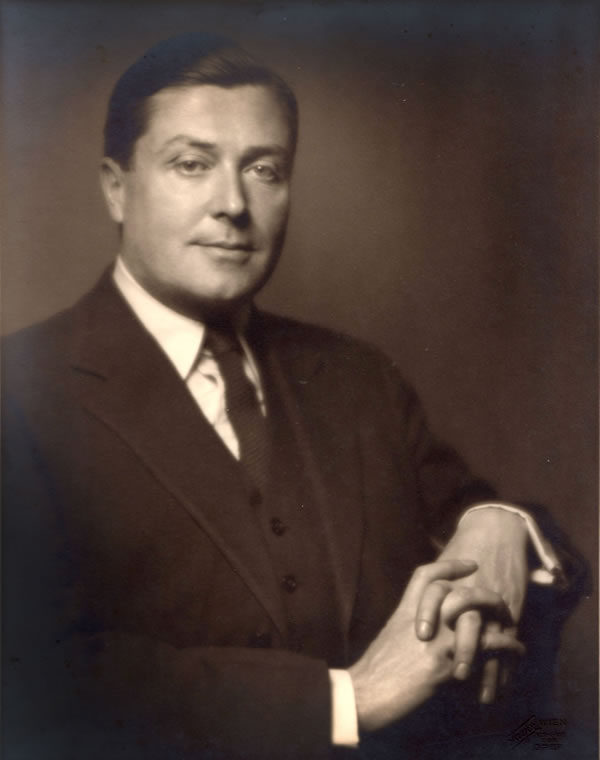
To find out more, in the TV programme, Clare goes to visit her Uncle. From him she learns about Sir Malcolm’s public life as an MP and that he had been awarded the Legion D’Honneur by France for his diplomatic work. Clare’s great-grandfather was also a lover of art and culture and she is shown a wonderful collection of letters, that included correspondence with Evelyn Waugh, Nancy Mitford and Sir John Gielgud. There are rumours that Malcolm Bullock and the artist Rex Whistler had entered into a relationship but her uncle is unable to shed any light on that for her.
Rex Whistler came to the public’s notice in 1927 when he painted a mural on the restaurant wall at the Tate Gallery in London and in the 1930s he moved in a social circle that included many wealthy friends and clients. Clare visits the Salisbury Museum, while filming for Who Do You Think You Are?, where she was able to research the Rex Whistler archive that is held there. In a meeting, with art historian Nikki Frater, a number of documents are revealed which confirm that Malcolm and Rex had a close friendship. Rex had recorded meetings that he had with Malcolm in 1931 which included dinners, visits to the opera, the theatre and a trip to Paris. There are further documents that the artist’s brother (who was also Rex Whistler’s biographer) had filed under the tag of “Love”. These reveal that contemporaries of Rex Whistler were gossiping about Malcolm’s relationship with him. It is, however, not much of a surprise to Clare that there are no letters in the collection that prove that her great-grandfather and Rex were lovers this was, after all, at a time when homosexuality was illegal in Britain. It seems that, by 1932, the intense friendship between Sir Malcolm and Rex Whistler had waned. A huge painting, which sat above the fireplace in Sir Malcolm Bullock’s home, is thought now to have been a final parting gift to Sir Malcolm from the artist.
There’s a hint of tension in everything because he’s a very public figure, he’s an MP, and he’s clearly living a lifestyle that suggests he might be engaged in illegal acts. You can’t say this enough, it was illegal for a man to be homosexual.
Wanting to take the research into her great-grandfather’s personal life further, Clare visits Port Lympne in Kent and the spectacular home of Malcolm Bullock’s friend, the politician Sir Philip Sassoon. It is from Damian Collins MP an expert on Sassoon that Clare finds out that Sir Malcolm had been a regular guest at Sassoon’s glamourous house parties. At these gatherings it was understood that guests were safe to “be themselves” secure in the knowledge that nothing would be reported outside of their social circle. Here, Sir Malcolm Bullock was part of a set of politicians who are now known to have been gay or bisexual. Clare comes to a conclusion from this information.
Access Over a Billion Records
Try a four-month Diamond subscription and we’ll apply a lifetime discount making it just £44.95 (standard price £64.95). You’ll gain access to all of our exclusive record collections and unique search tools (Along with Censuses, BMDs, Wills and more), providing you with the best resources online to discover your family history story.
We’ll also give you a free 12-month subscription to Discover Your Ancestors online magazine (worth £24.99), so you can read more great Family History research articles like this!
In my mind there’s no doubt that he was gay or bisexual. I mean, he had been married, but he would certainly rather have been with men.
That being the case, Clare now wonders about Malcolm Bullock’s earlier marriage to her great grandmother, Lady Victoria Stanley.
I’d love to know how this marriage came about, whether it was a marriage of convenience; whether there was any warmth in it.
To seek the answer to this Clare travels to Knowsley Hall, the ancestral home of the Earls of Derby and the childhood home of her great grandmother, Lady Victoria Stanley.
Apart from knowing that Lady Victoria died in a tragic riding accident and having a rather formal, unsmiling, portrait of Lady Victoria on her wall, Clare doesn’t know much about her great-grandmother. With the help of Stephen Lloyd, the curator of the archives at Knowsley, Clare examines scrap books which cover her 2x great-grandfather’s period as British Ambassador to France from 1918 1920. Captain Malcolm Bullock was posted to the Embassy in Paris as his Military Secretary and it was at this time that he met Lady Victoria. Clare reads letters from Victoria to Malcolm which suggest she had an unexpectedly fun and cheeky side. Another scrapbook reveals the tragedy of Lady Victoria’s death 8 years into the marriage in 1927. The expressions of grief leaves Clare certain that her great-grandparents’ marriage was in fact a genuinely loving one.
I think Malcolm and Lady Victoria had a very happy marriage, albeit short… it may have been a convenient meeting but it wasn’t a marriage of convenience…and 3 or 4 years later he’s living in a very different circle, he’s swept up into a different world.
Using the records of TheGenealogist we are able to find in the Visitation of England and Wales 1919 that Captain Malcolm Bullock married Lady Victoria Alice Louise Primrose at the Embassy Church in Paris on the 11th June 1919. This record shows us that Lady Victoria was the daughter of the 17th Earl of Derby, and at the time was the widow of the Honorable Neil Primrose M.P.
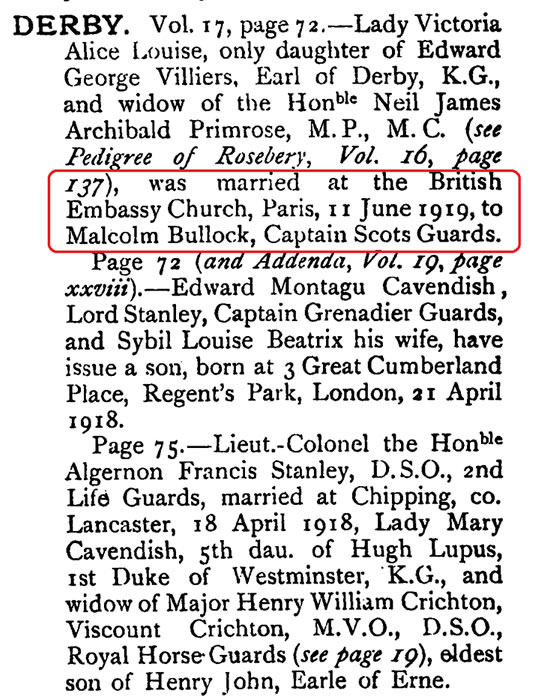
Clare’s Paternal Line
To begin looking at her paternal line, Clare talks to her father, racehorse trainer Ian Balding along with his cousin Judith about their side of the family. The Baldings are descended from a long line of polo players, horse dealers and trainers. Ian’s father, Clare’s grandfather Gerald Barnard Balding, was a 10-goal polo player and he had travelled to play polo in America in the 1920s when he was in his 20s. It was there that he met and later married the American heiress, Eleanor Hoagland.
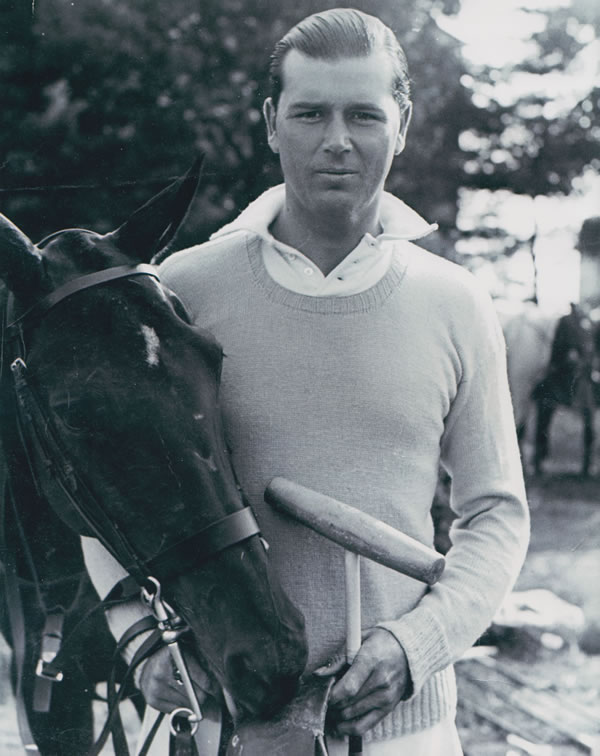
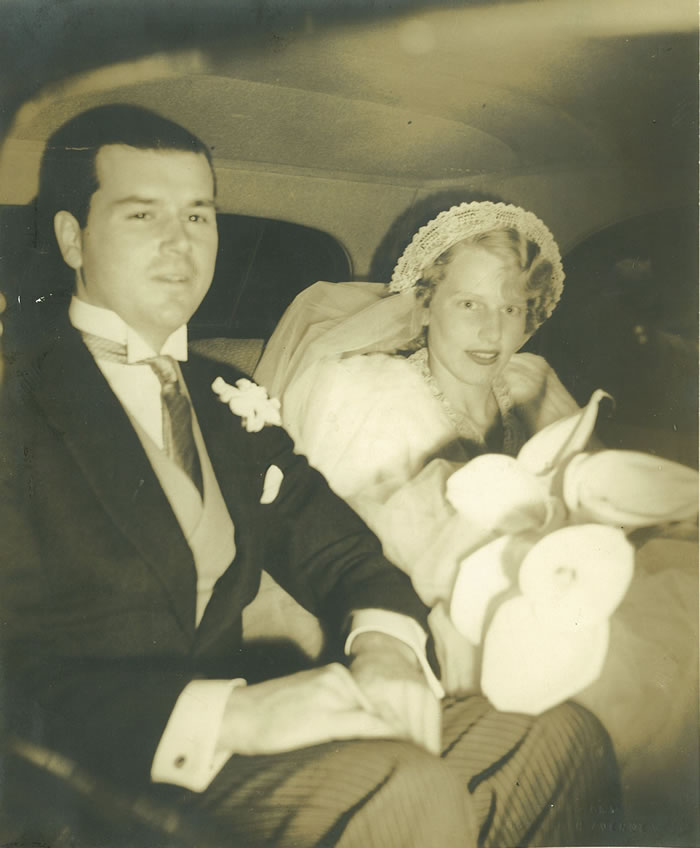
By using the resources of TheGenealogist we can find several passages that he made to America within the BT27 Outbound passenger lists on TheGenealogist.
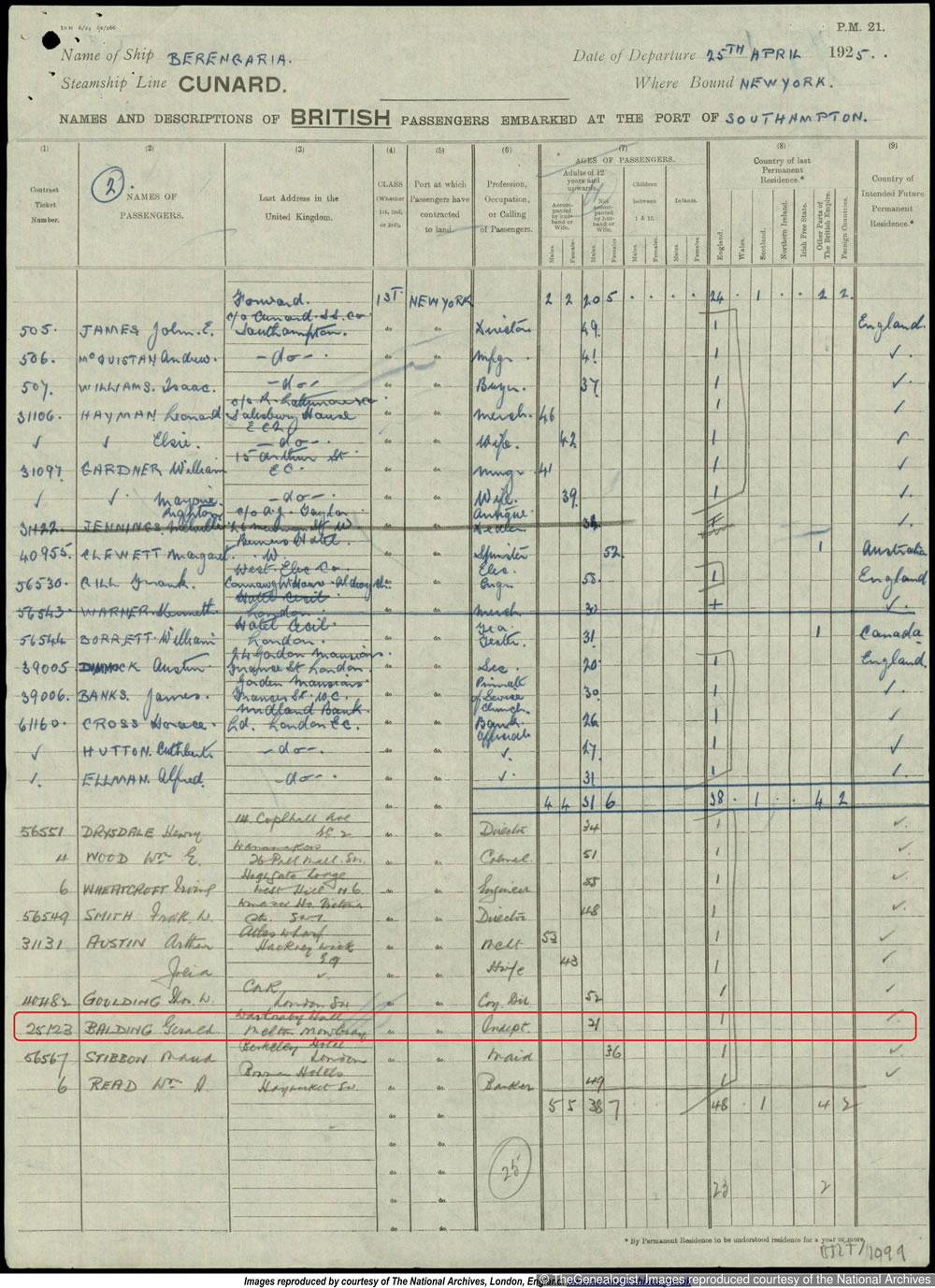
As the Baldings know very little about the Hoagland family, Clare follows in Gerald’s footsteps and heads to the US to Rumson, New Jersey to trace the family there.
It’s a very odd thing knowing that a lot of me is American. But I’ve never really felt American. And maybe that’s to do with not really knowing much about that side of my family…
Who do You Think You Are? takes Clare to the country club in Rumson where her grandfather played polo and it is here that she meets her Aunt Gail and finds out that Gerald Balding had been an international polo star. He had come over to America from England to teach polo at the Rumson club and also to play American teams. At the Rumson club Gerald met Clare’s grandmother Eleanor whose father, Joseph Hoagland, owned a large estate nearby. It seemed that the wealthy Hoaglands were not pleased that their daughter wished to marry an English polo player with little capital behind him. Claire is shown a photo of her imposing great-grandfather Joseph and wonders how it was that he made his money.
So, Joseph Hoagland with the piercing blue eyes, you terrifying man…who are you and what did you do?
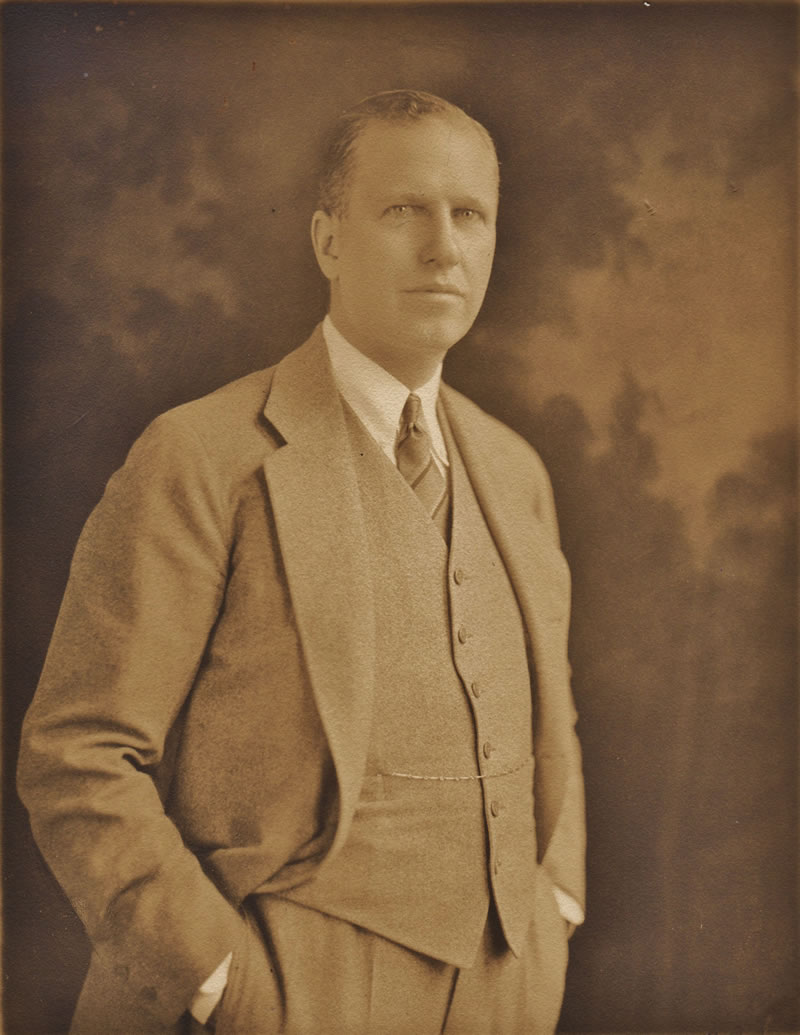
At the Rumson Library, Clare is able to discover Joseph and his family in the 1920 census where they are living in Manhattan at the very affluent address of Madison Avenue. She is also able to find a passport application which reveals that his occupation was in ‘real estate’. Clare next visits Manhattan on the trail of her American family where Jason Barr, an expert on the history of Manhattan, indicates to her a building that Joseph Hoagland financed and developed in 1920. As just one of the projects he bankrolled, this one represented a $1,000,000 investment on Joseph’s behalf. Clare’s great-grandfather had been a developer who had followed the trend for a new style of urban living in New York. More and more affluent New Yorkers were selling off their previous townhouses and moving into the new high-rise luxury apartment buildings that were going up all over the city at this time.
Access Over a Billion Records
Subscribe to our newsletter, filled with more captivating articles, expert tips, and special offers.
Clare’s reaction was to say about the Hoaglands:
Let’s not beat about the bush – they’re loaded!
Clare wants to know if Joseph had been a self-made man, and so Jason takes Clare on a walk to see the location of Joseph’s father Raymond’s former home. The address turns out to be on Fifth Avenue, right opposite Central Park, and it is still prime real estate today. Reading a newspaper report of Joseph’s marriage to his wife Eleanor Prentice, there is a mention of Joseph’s “distinguished grandfather” who is also called Joseph Hoagland. This points to Clare’s 3 x great-grandfather, Joseph Sr as being the original Hoagland entrepreneur. The New York Historical Society provides Clare with the opportunity to look at some directories for New York in this period and she is surprised by the product that her ancestor had made his money from.
Baking powder? How would you make a fortune out of baking powder?
Clare visits the Brooklyn address listed for Joseph Hoagland Sr’s Royal Baking Powder Company. The food historian, Linda Civitello, explains to Clare that although her ancestor’s business didn’t invent the product, he was, however, able to improve on its marketing and advertising and so make millions of dollars in the process. Baking powder had been invented in the mid-19th century and as it was a more reliable and convenient alternative to yeast, for leavening baked goods, it soon took off among the buying public. Joseph Hoagland began by selling baking powder from a drugstore in Indiana before going into partnership with his brother Cornelius. The Hoaglands then branded the product and moved their business to New York. By using some smart national advertising they made the brand memorable and this was how Clare’s 3 x great grandfather made his family’s original fortune.
What sort of qualities does a man like Joseph Hoagland have to take a risk the way he did? Was he a nice man or not?
Clare meets Clifton Hood, a historian, who is able to explain about Joseph Hoagland’s rise to prominence in New York society. A newspaper report of a business dispute sees Cornelius Hoagland quoted as describing his brother Joseph:
Suffice to say in a general way that his faculty for making uncomfortable everybody he comes in contact with is unsurpassed.
Joseph Hoagland Sr died in 1899 and Clare reads from her ancestor’s obituary that he was of “Dutch extraction and a descendent of the early settlers of New Amsterdam”. New Amsterdam was the former name of New York City when it was founded in the 1620s by the Dutch. Later on it became a sign of social status if a New Yorker could prove their descent from the early Dutch settlers, and so sometimes it was falsely claimed. Clare wasn’t sure what the case was with her forebears’ claim.
If he was of Dutch ancestry then he made New York! And it’s all mine!
At the Brooklyn Historical Society, Clare meets genealogist Roger Joslyn who shows her a 19th century genealogy volume which charts the Hoagland family line “From their First Settlement at New Amsterdam” in the 1620s. Even though this study had been commissioned by Joseph’s brother Cornelius, the genealogist has verified the links and research independently and he tells Clare that the Hoaglands really do come from the earliest Dutch settlers to New York. Clare’s 10 x great grandmother is identified to be Sarah Rapelje, who is believed to have been the first European woman to be born in New York.
Clare’s family history journey has shown us that her maternal line is of English aristocratic stock and also included an ex-Scots Guards officer and Member of Parliament whose sexuality had to be kept hidden, as at the time it was illegal to be a homosexual. Tracing her paternal line sees her follow a penniless polo player, from England, who crossed the Atlantic to play in America. There he married the daughter of a rich New York property owning family that could trace its roots back to early New Amsterdam and from there back to Holland, so cementing their social status in the Big Apple.
Sources:
Press Information from IJPR on behalf of the programme makers Wall to Wall Media
Extra research and record images from within TheGenealogist
BBC Images






